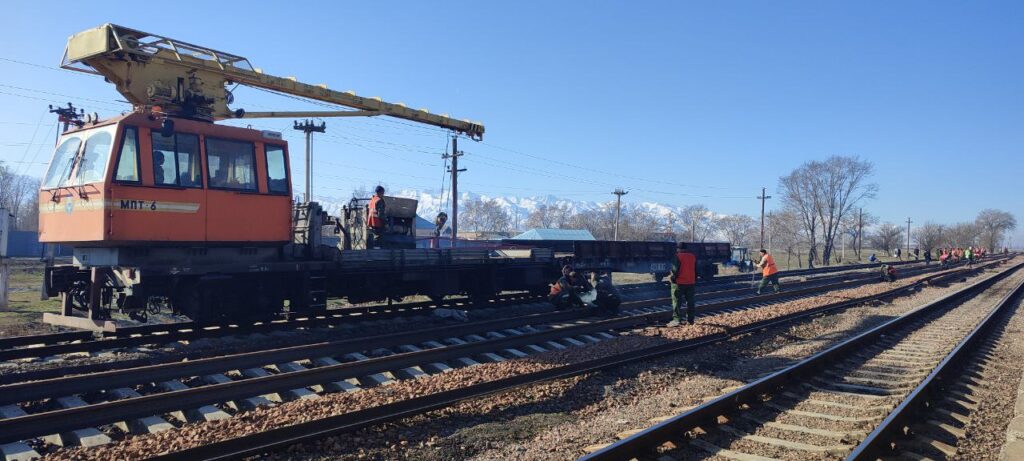Modernization of Kazakh Railway Infrastructure is a Priority
According to the National Infrastructure Plan of the Republic of Kazakhstan until 2029, the overall level of wear and tear of the railroad network is about 50%. In addition, the qualitative characteristics of the track do not meet current business demands and are inferior to other countries in terms of its development. In order to improve the quality and guarantee reliable and safe transportation of passengers and cargo by rail, KTZ plans to repair about 11,000 km of railway sections by 2029. According to JSC NC Kazakhstan Temir Zholy, which operates the country's railway mainline network, 1,430 km of track was repaired as part of last year's summer track works, including 570 km of major railway track overhauls. As Sakеn Rakhmetov, Brach Director of KTZ’s Mainline Network Directorate, told The Times of Central Asia, train speed improvements were achieved on 413 km of track for passenger trains with Talgo cars, 605 km for passenger trains, and 406 km and 507 km for freight and container trains, respectively. In the upcoming season, which will begin in March, 1,480 km of track across the country are planned for repair, including 512 km of major overhauls. "Repair work will be carried out on key railway sections with heavy train traffic. The first projects are planned on the Beineu-Mangystau, Zhambyl-Tyulkubas, Shu-Almaty, and Makat-Aksarayskaya sections," Rakhmetov explained. KTZ has developed a corresponding Program for the Development of Railway Infrastructure Capacity. Several modernization and reconstruction projects are planned, including upgrades to signaling, centralization, and blocking systems. "A limiting factor in the railway infrastructure's throughput capacity is the processing ability of stations, as well as the useful length of receiving and departure tracks. With the introduction of modern locomotive types and the increasing share of container trains, both train weight and composition length have grown, while station infrastructure has remained unchanged. For instance, 59% of stations and passing loops currently cannot accommodate long trains. Therefore, by 2029, the development of approximately 200 stations and junction points is planned. This year alone, work is set to begin on 31 stations," Rakhmetov stated. Notably, to increase the processing capacity of railway stations, a Sorting Systems Development Program was approved in 2024. As part of this program, work will begin this year on modernizing the sorting system at Karaganda-Sortirovochnaya station. Overall, by 2029, Kazakhstan plans to construct 5,000 km of new railway lines and repair 11,000 km of tracks, with 2,800 km already having been renovated over the past two years. Regarding the modernization of station buildings and passenger platforms, efforts to provide high-quality services to the population saw the completion of routine repairs on 36 stations in 2024. Architectural lighting was installed at the Astana-1 and Kurort-Borovoe stations, while heating systems were repaired at 16 stations. In total, between 2024 and 2029, 54 stations across the country will undergo modernization and major renovations at an estimated cost of 100 billion tenge ($204 million).






